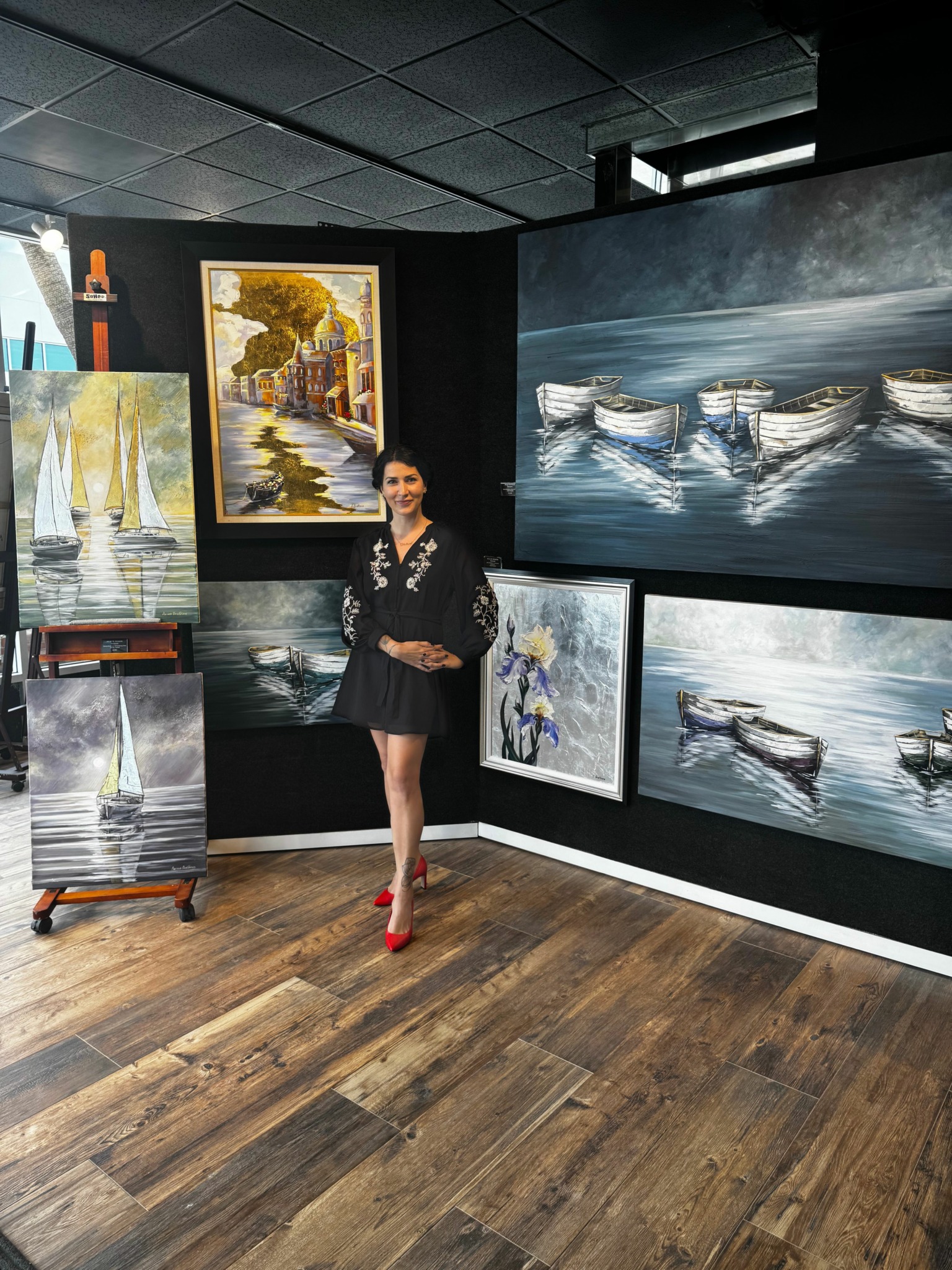Alright – so today we’ve got the honor of introducing you to Darina Bratkova. We think you’ll enjoy our conversation, we’ve shared it below.
Darina, thanks for taking the time to share your stories with us today I’m sure there have been days where the challenges of being an artist or creative force you to think about what it would be like to just have a regular job. When’s the last time you felt that way? Did you have any insights from the experience?
I have been an artist for over 10 years, and creativity has always been a part of my life. I graduated from university in Ukraine with a Master’s degree in Art. The journey has been filled with inspiration and challenges, but despite everything, I could never imagine myself outside the world of art.
When the war in Ukraine started, I had to leave my home and move to America with my family. It was a difficult and life-changing moment. I thought I might have to give up my creativity and find a “regular” job to support my family. At the time, those thoughts felt real and even frightening.
But after moving here, I found my dream job at Procaccini Gallery. It’s a place where I am valued and respected, where I can be myself, create, and share my vision of the world. Every day, I see how my work resonates with people, and it reminds me why I chose this path.
Yes, sometimes the thought of living a more predictable and structured life still crosses my mind. Especially on days when inspiration feels out of reach or when the weight of expectations becomes heavy. But it’s during those moments that I realize art is not just a job—it’s my way of experiencing life.
Now, I am sure of one thing: even in difficult moments, art remains my source of strength and meaning. A regular job might bring stability, but it could never replace the joy of creating and the freedom of being an artist.


Darina, before we move on to more of these sorts of questions, can you take some time to bring our readers up to speed on you and what you do?
My name is Darina Bratkova, and I am an artist who moved to America from Ukraine due to the war. I have been living here for a year and a half, and during this time, my artistic career has undergone significant changes. I started my work as an embellisher in the Procaccini Gallery in Florida, and after a year, I already represent my own paintings in three galleries located in Naples, Sarasota, and Key West.
In my works, I use gold leaf and depict boats and sailboats that symbolize freedom and progress despite difficulties. This motif also reflects my own life: when I had to flee from war, my world collapsed, but I continued to move forward, despite fear and uncertainty. I am proud to demonstrate courage and determination in my goals and aspirations.
My art is full of drama and depth, and I hope it helps others feel strength and hope, even in the hardest times. I want potential clients and art enthusiasts to know that each of my pieces reflects not only my experiences but also the shared human experience of struggle and overcoming obstacles.


What do you think is the goal or mission that drives your creative journey?
Yes, I have a specific goal that drives my creative journey. It is to get back on my feet in a new, yet beautiful country. I aim not only to adapt to life in America but also to create something meaningful for the community.
My overarching goal is to open an art university in Florida. I want to create a space that supports young and talented artists, providing them with the opportunity to learn, grow, and share their ideas. I believe that such a university can make a significant contribution to the creative ecosystem, inspiring a new generation of artists and fostering the development of art in the region.


In your view, what can society to do to best support artists, creatives and a thriving creative ecosystem?
Society can take several steps to support artists and create a thriving creative ecosystem. First, it is important to provide access to funding and grants for artists. This can help them realize their projects and experiment in their creativity without financial pressure.
Second, creating public spaces for exhibitions and events allows artists to showcase their work and connect with an audience. Initiatives such as art festivals, galleries, and creative clubs can stimulate interaction and collaboration among artists.
In addition, education plays a key role. It is important to offer educational programs and workshops to help young artists develop their skills and find their voice in creativity.
Finally, society should actively support and value art and culture, integrating them into everyday life. This can be done through initiatives aimed at promoting the arts in schools, libraries, and community centers. When people see the value of art, they become more engaged in supporting it.
Thus, a combination of financial support, educational opportunities, platforms for showcasing work, and active community participation can create a healthy and thriving creative ecosystem.
Contact Info:
- Website: https://www.darinabratkova.com/
- Instagram: darinabratkova_art




